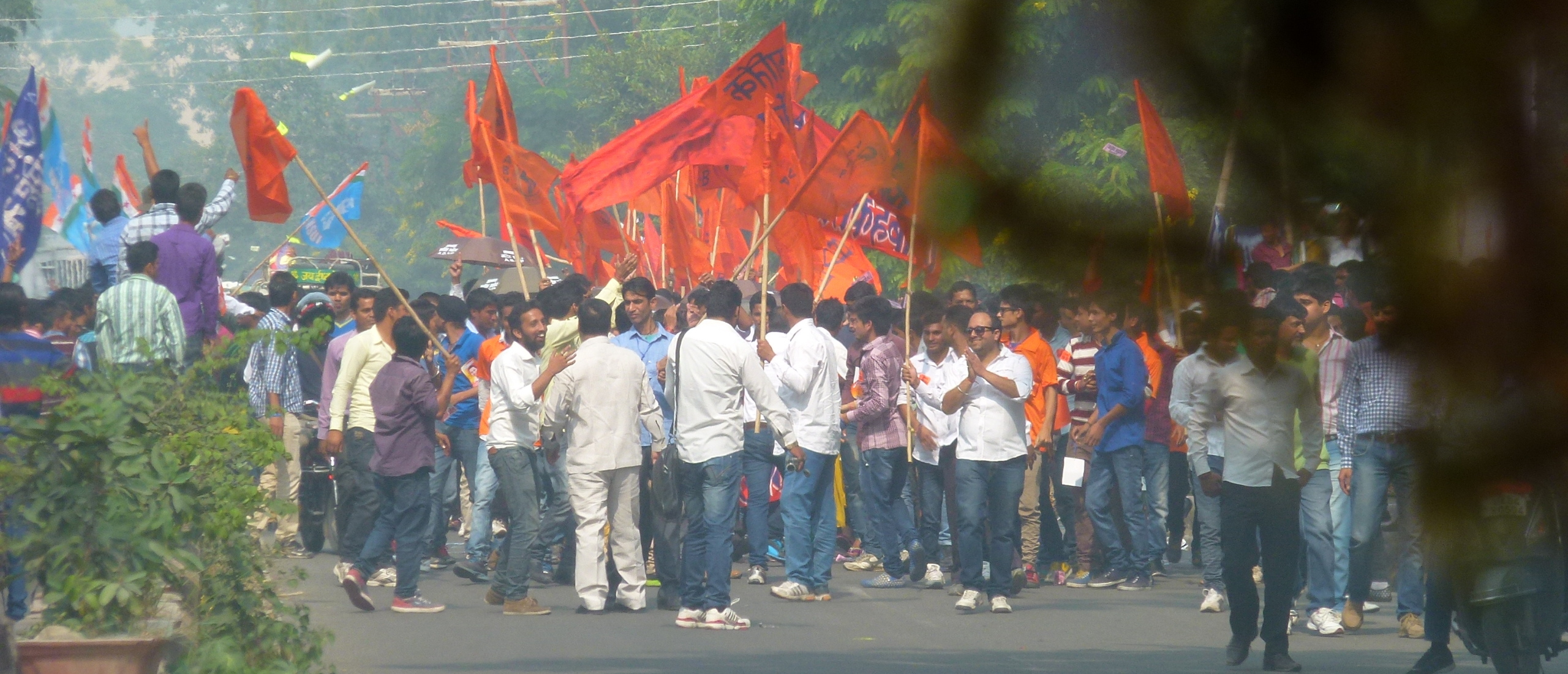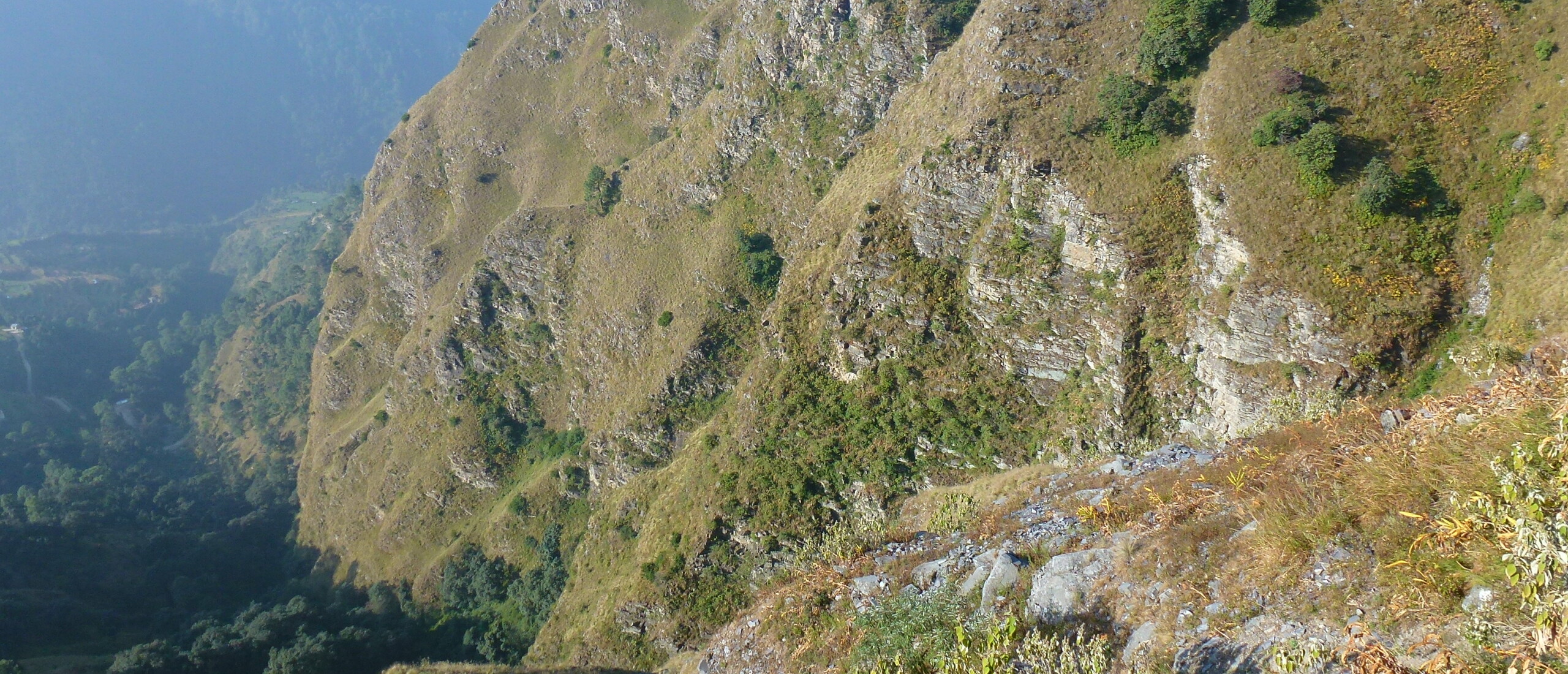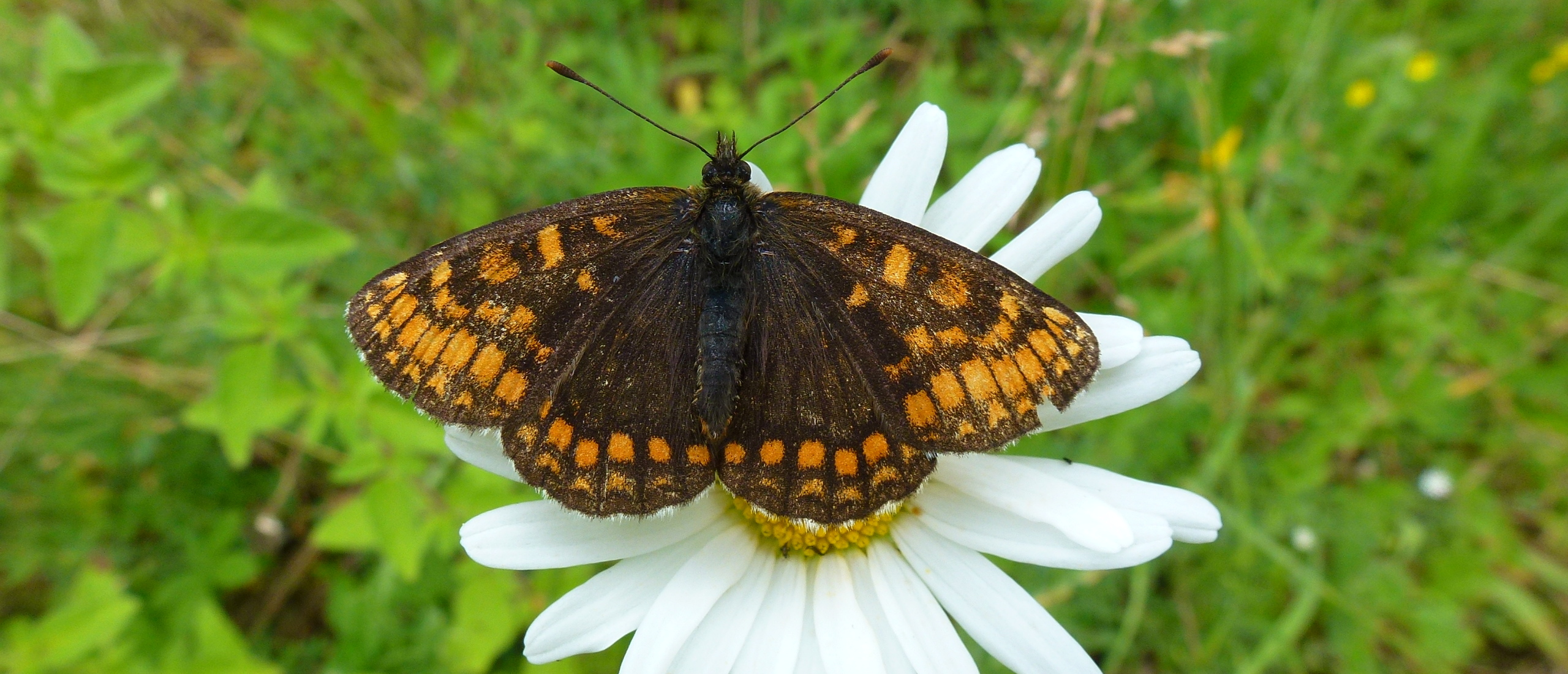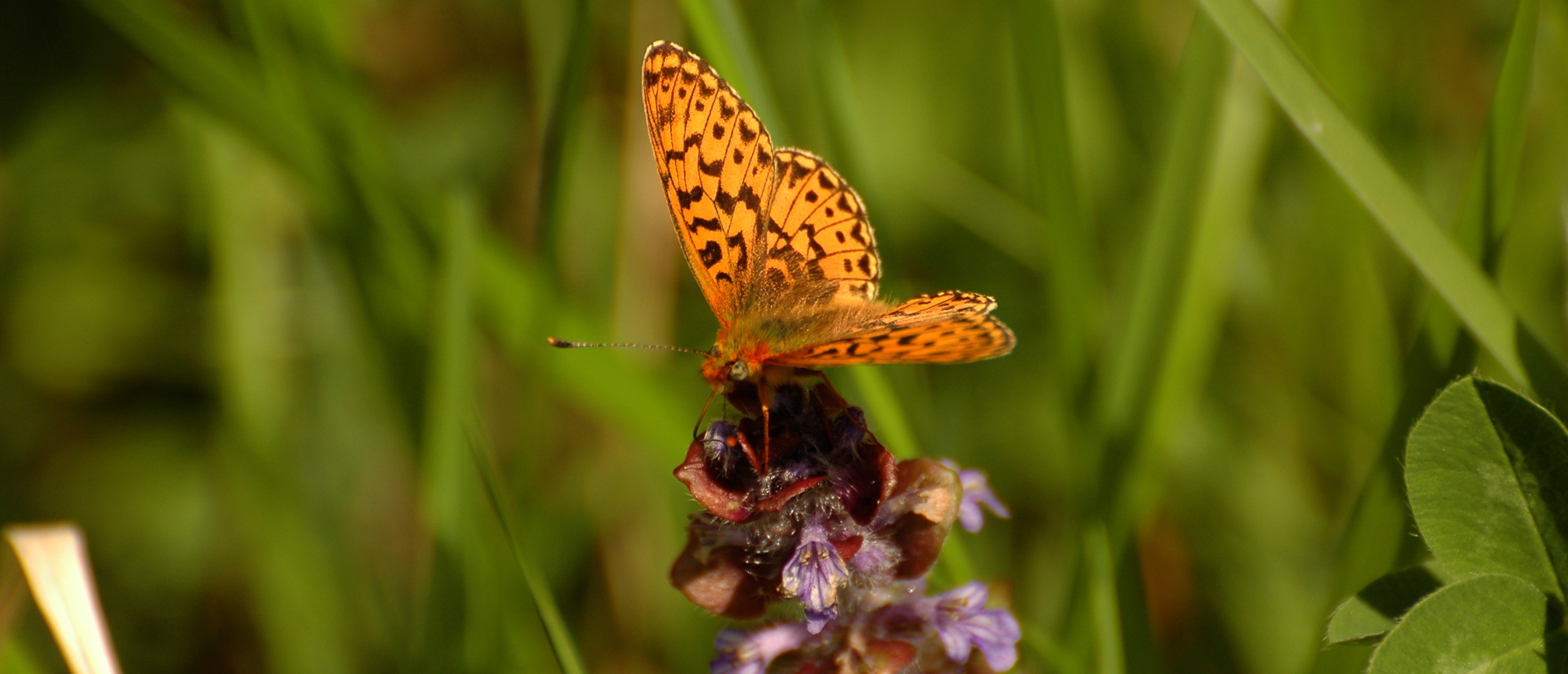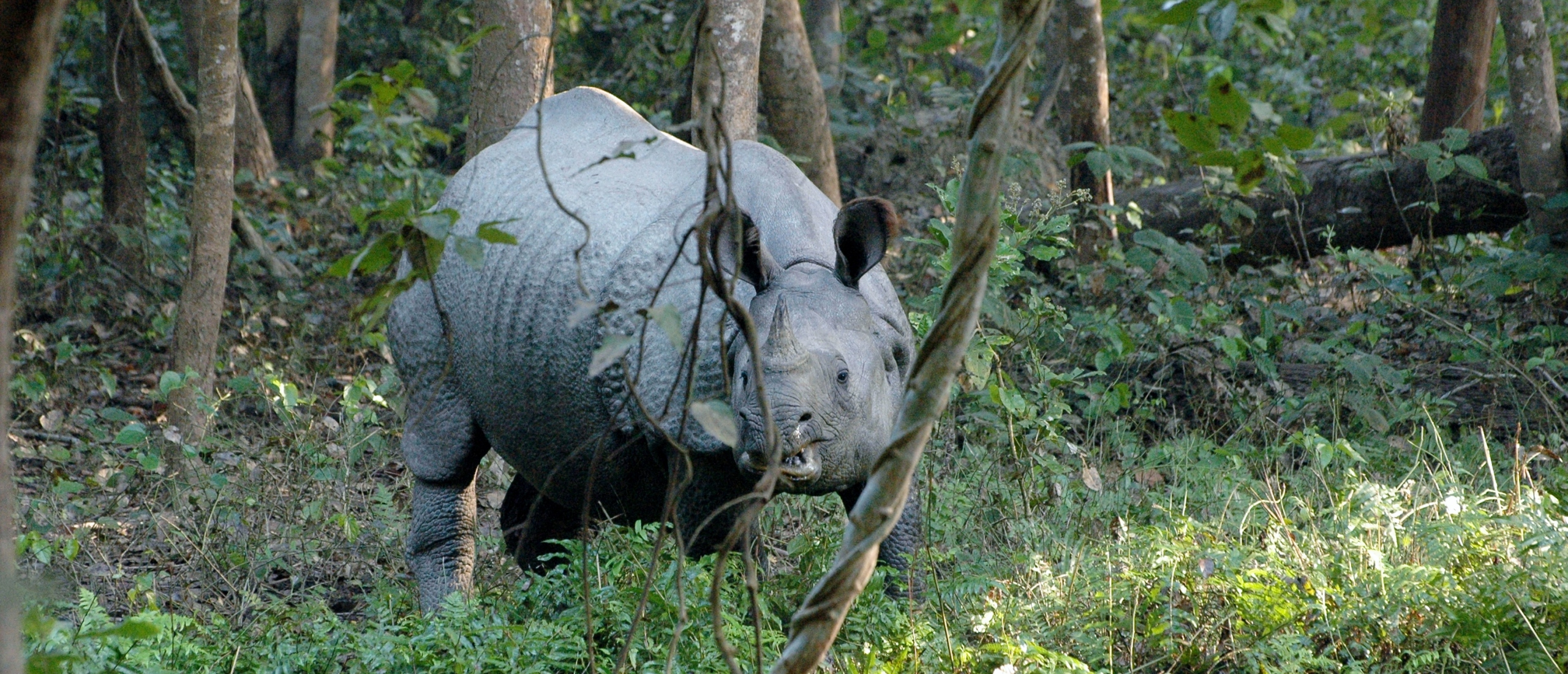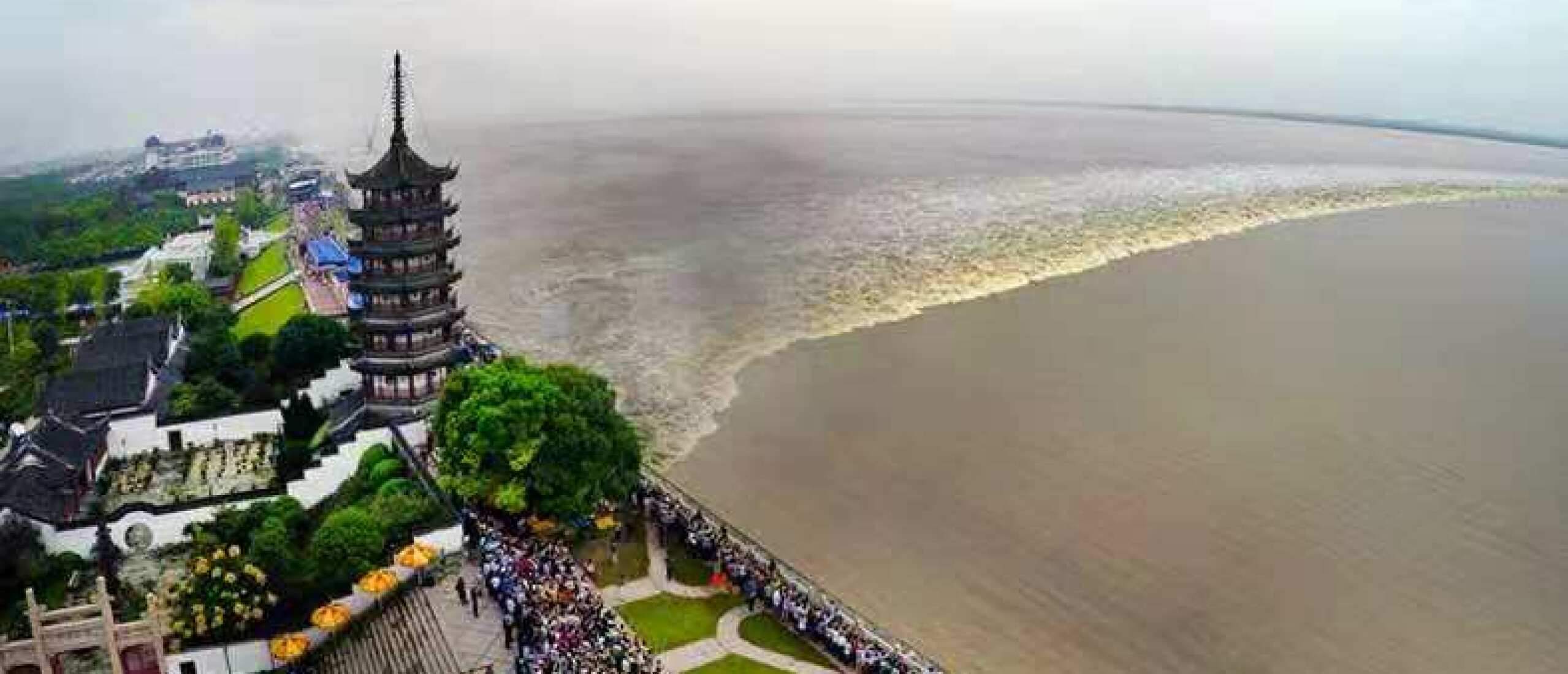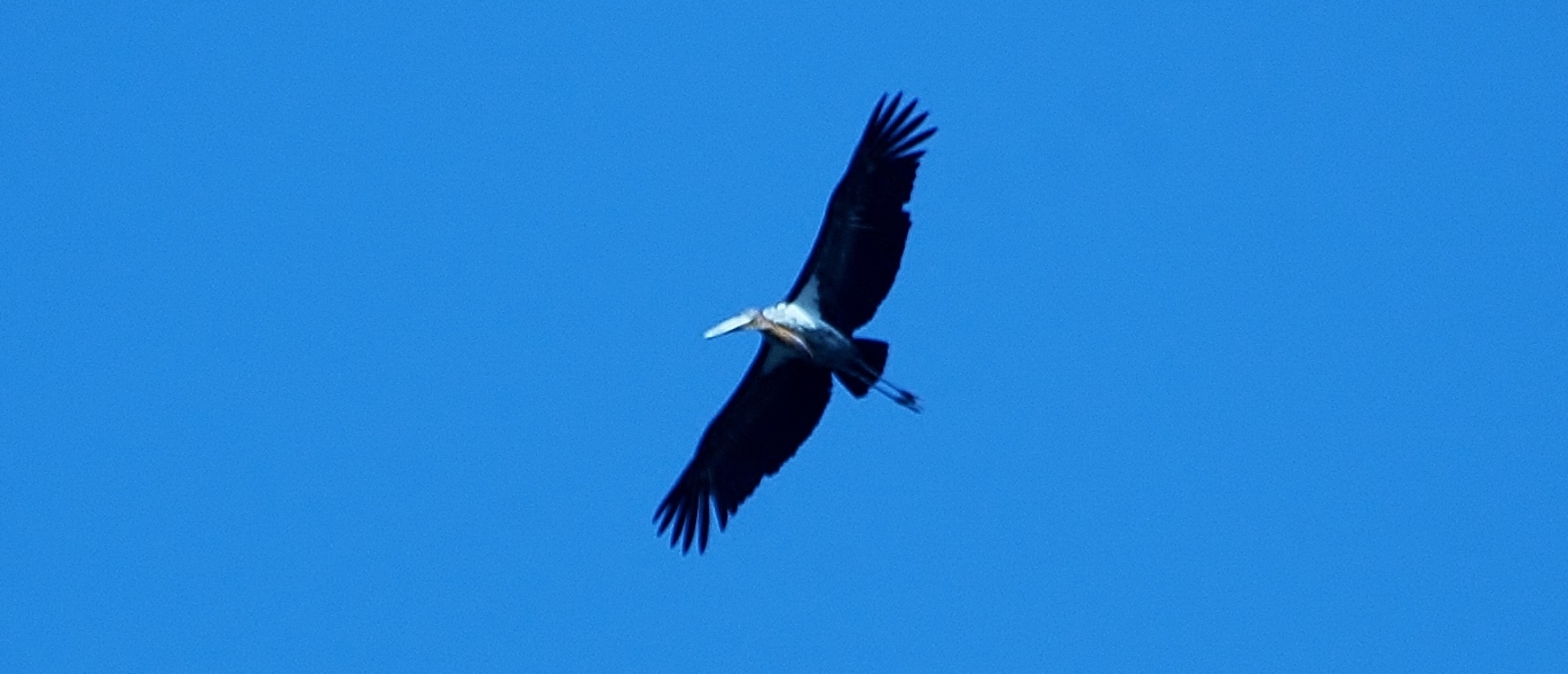
Darjeeling – Queen of the Hills…or not? And Kaziranga, the Rhinos’ saviour. Following our departure from Bhutan, we crossed the border into India, and the contrast was immediately noticeable – the frenetic rush of Indian traffic was around us at once, but initially not for long, as we had to stop at Indian immigration, which appeared to be housed in a private house, albeit with a kind of blockhouse at the entrance, manned by a military policeman. Having filed into the waiting room, we were called in one by one to be interviewed and photographed in order for us to obtain re-entry stamps in our passports. All went smoothly until it came to Rosemary’s turn – she had filled in her form in red, which was unacceptable; this was not nearly as serious an issue as that experienced by a French couple who followed us in: they had failed to obtain an exit stamp for Bhutan, and had to re-cross the border into Bhutan, get the stamp, and then re-enter India and re-present themselves at immigration. There then followed a seemingly endless drive, initially through lowland tea plantations, then over the Teesta River via the Coronation Bridge, and then ever upwards until we eventually reached the ridge on which the “Queen of Hill Stations”, Darjeeling, is situated. First impressions were slightly underwhelming – chaotic traffic and an almost impossible one-way system that would be enough to put off even the most hardened of travellers.
 The Coronation Bridge over the Teesta River, built in 1937
The Coronation Bridge over the Teesta River, built in 1937
Once we had finally arrived, we checked into our charmingly colonial accommodation, the Elgin Hotel. The public areas looked marvellous, and Rosemary was half-seriously asked whether she would be leading the party in Raj-era dancing (as a “relic” of Empire), but I was none too impressed to find that I had been allotted a room with no windows other than a couple of long painted in and totally unopenable skylights. Luckily I was able to change rooms the following day. Darjeeling is an extraordinary mix of old British buildings, chaotic mess, extreme traffic congestion and energy. We had a programme that was initially planned to be almost entirely culture-based, but a mild rebellion from the group altered the focus to more wildlife, and our local guide, although he had not experienced birding groups before, did manage to seek out some more rural locations and walks, so we did at least see something of Darjeeling’s apparently rather limited natural offerings.
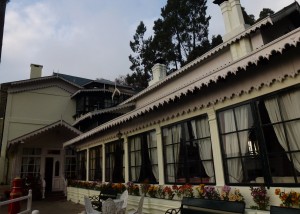 The charming Elgin Hotel, Darjeeling
The charming Elgin Hotel, Darjeeling
One of the standard attractions of a visit to this hill station is a trip on the famous Darjeeling Himalayan Railway (DHR), first opened in 1881, and which brought visitors up to the cool mountain climes from the steaming plains of Bengal. Sadly, since 2009 the lower section of track from New Jalpaiguri to Kurseong has been in flux due to a series of landslides, and it is not certain when (or if?) services will resume, but from Kurseong to Darjeeling the trains still snake their way along the 2 ft gauge track, these days passing within inches of local shop fronts and crossing and re-crossing the main road, which takes away some of the charm of the scene that I had imagined, of the railway snaking its way up through the tea plantations and Himalayan forests.
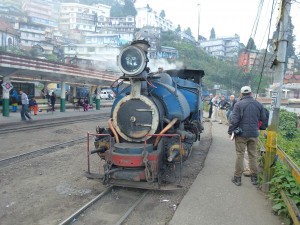 One of the splendid steam locomotives of the Darjeeling Himalayan Railway
One of the splendid steam locomotives of the Darjeeling Himalayan Railway
We took the train from Darjeeling as far as Ghum, stopping at the renowned Batastia Loop to admire this engineering feat. It has to be said that watching the splendid old steam locomotives puffing and hissing around the station was almost more interesting than riding the train, with its grimy windows and cramped interior, but the staff who manage to keep the old locomotives running deserve every congratulation, and we can only hope that the line will be completely restored in the not too distant future. One very pleasant sight was an extremely keen team of school-girl volunteer litter pickers, who were sweeping up trash around the station – apparently schools take it in turns to perform this task, although this particular case may have had more to do with Prime Minister Modi’s Clean Up India campaign.
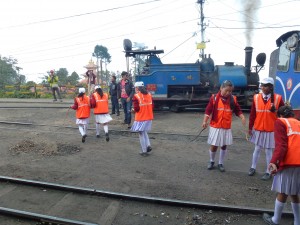 These girls were doing a grand job of cleaning up the station and tracks
These girls were doing a grand job of cleaning up the station and tracks
Another major attraction of Darjeeling is the early morning excursion to Tiger Hill, which offers one of the most famous Himalayan panoramas, focusing on the Kanchenjunga massif but also including the more distant Everest. This autumn, however, has not been kind to those who brave the 03.30 start to reach the viewing area, with hazy conditions blocking out the view. We ventured to Tiger Hill one afternoon, and visibility was only a few hundred yards. We admired the non-existant view, and were disappointed by the hundreds of discarded paper coffee cups that the morning viewers drink out of to warm themselves in the freezing early morning temperatures, and then launch over the parapet. Where is the Clean Up India campaign here?
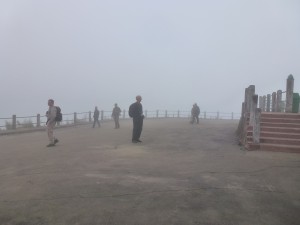 Enjoying the Himalayan panorama from Tiger Hill??!!
Enjoying the Himalayan panorama from Tiger Hill??!!
After a few days, we braved the traffic-filled roads again to head down through precipitous tea estates to the airport at Bagdogra, from where we boarded a flight to Guwahati, capital of Assam. We arrived after dark here, and were split up into three separate Toyota Innova vehicles. The drivers were given strict instructions to keep together, but in the melée of traffic we became separated, and once we were away from the congestion, our driver really put his foot down. I did manage to drift off to sleep for a while, but when I woke up, we were already in the vicinity of Kaziranga National Park, where I clocked him doing 120 kph precisely where there was a sign saying “Caution Animal Corridor. Wild Animals Crossing. Max Speed 20 kph”. Rumble strips became launching pads as we flew over them. Rosemary slumbered peacefully through the entire adventure. One advantage of this high-speed dash was that we arrived at our accommodation, the Wild Grass Camp, while the restaurant kitchen was still open, so we had already enjoyed a delicious (non-spicy) meal when I suddenly received a text message from our guide, saying “Call me immediately!!! Where are you?” He had become very concerned when the vehicles had got split up, and was extremely relieved to see us when the rest of the vehicles arrived later. No doubt that driver got a real earful later on! Kaziranga is a jewel. Our days consisted of early morning game drives in the ubiquitous Maruti Suzuki Gypsy jeeps (we had three, one of which broke down consistently and had to be sacked – breaking down in close proximity to a Rhino, a Wild Elephant or a Tiger could have disastrous consequences), lunches back at Wild Grass, and afternoon Gypsy rides in another part of the Park.
 The attractive Wild Grass resort, Kaziranga
The attractive Wild Grass resort, Kaziranga
One morning included an elephant ride, which I have to confess I did not enjoy greatly! I had previously experienced a different style of ride, where passengers sit on wooden planks looking out from the howdah. Here, in contrast, you have to straddle the elephant, and as my position was in the middle spot of a clearly very pregnant female, my nether regions suffered so badly that I turned down the offer of a further ride two days later.
 Elephants lining up to take on riders at Kaziranga
Elephants lining up to take on riders at Kaziranga
Undoubtedly the highlight of Kaziranga is its assembly of Great Indian One-horned Rhinos. This one park hosts perhaps 80% of the entire World population, which is under constant threat of poaching for the horns, which of course have supposed value in traditional Chinese medicine (what endangered animal product does not?), as well as being coveted for ceremonial dagger handles in Yemen and the Gulf. The Park now has a shoot-to-kill policy towards anyone seen who may be suspected of illicit activities.
 Face to face with a Rhino taking a bath
Face to face with a Rhino taking a bath
Shocking though it is, we became almost blasé about Rhinos; from one watch-tower, we were able to count 48 individuals, and we had seen at least another 20 on the way to that spot. We saw several mothers with calves, and at least here it seems that the animals have a future, so long as the will to preserve them persists.
 One of the many Rhinos we met in Kaziranga
One of the many Rhinos we met in Kaziranga
Higher still on my list of wants was an even more endangered species, the Greater Adjutant Stork, of which fewer than 2,000 still manage to hang on. Supremely ugly, with their bald heads and hanging, bare “gular sacks”, these relatives of the African Maribou Stork can best be seen scavenging at the municipal rubbish tip in Guwahati, but our arrival there after dark had put paid to our chances of a visit. Our local guide Tharoon pulled out all the stops to find me this enormous yet elusive bird, but it was not until the third day that three of these prehistoric-looking giants were spotted, circling with a few of the closely related and more numerous Lesser Adjutants.
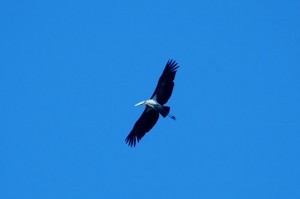 The Greater Adjutant Stork, graceful in flight but ugly on the ground
The Greater Adjutant Stork, graceful in flight but ugly on the ground
One of the other highlights was a packed breakfast on the banks of the Brahmaputra, one of the World’s great rivers. Here the waters are divided into many different channels, with great sandbanks between them. As well as such avian highlights as at least 25 Great Thicknees and a full adult and a juvenile White-tailed Eagle, we were treated to the sight of a Gangetic Dolphin rising to breathe right in front of us. A more idyllic spot would be hard to find.
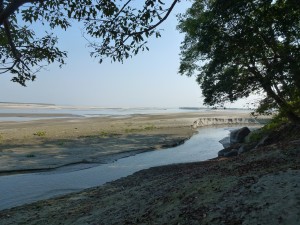 The Brahmaputra seemed almost like an inland sea
The Brahmaputra seemed almost like an inland sea
All too soon our time at Kaziranga drew to a close, and we left Wild Grass for the relatively short drive to the tiny airport at Jorhat for the two-hour flight to Calcutta, where we had one night of luxury at the Hyatt Regency Hotel before parting from three members of the Naturetrek group who had not booked the extension to the Sundarbans, the World’s largest mangrove delta – how we got on there will be described in the next installment.
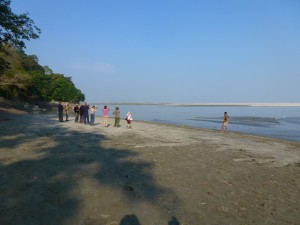 The group scanning for the elusive and camera-shy Gangetic Dolphin
The group scanning for the elusive and camera-shy Gangetic Dolphin



